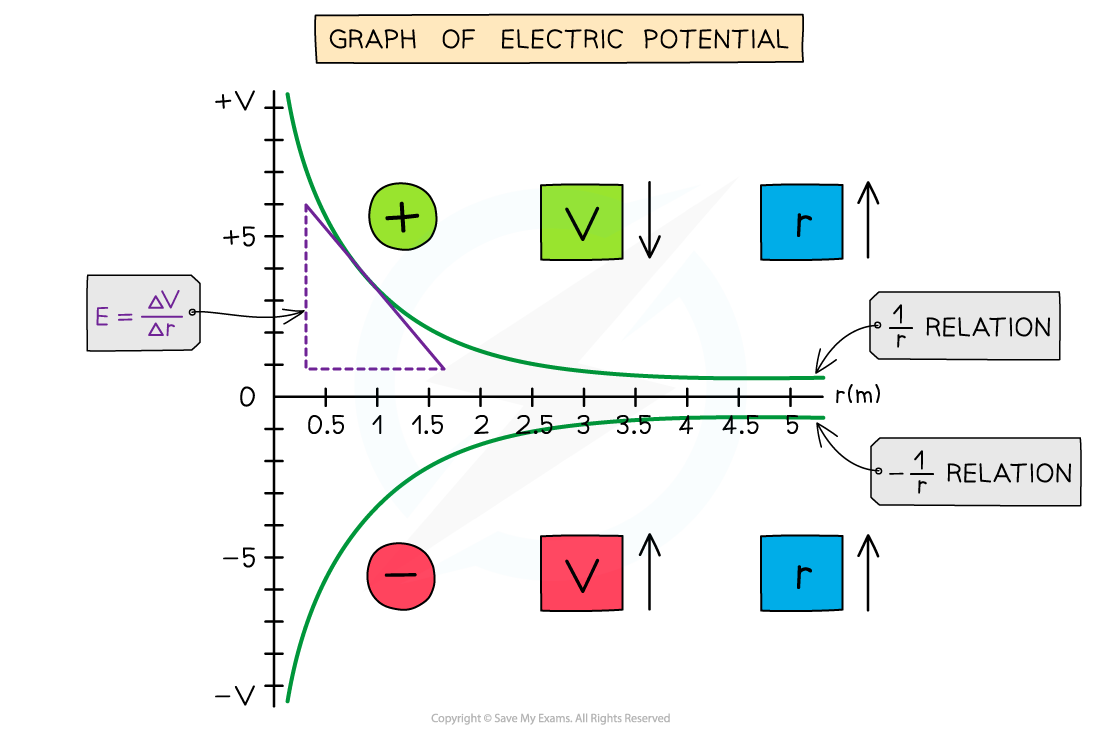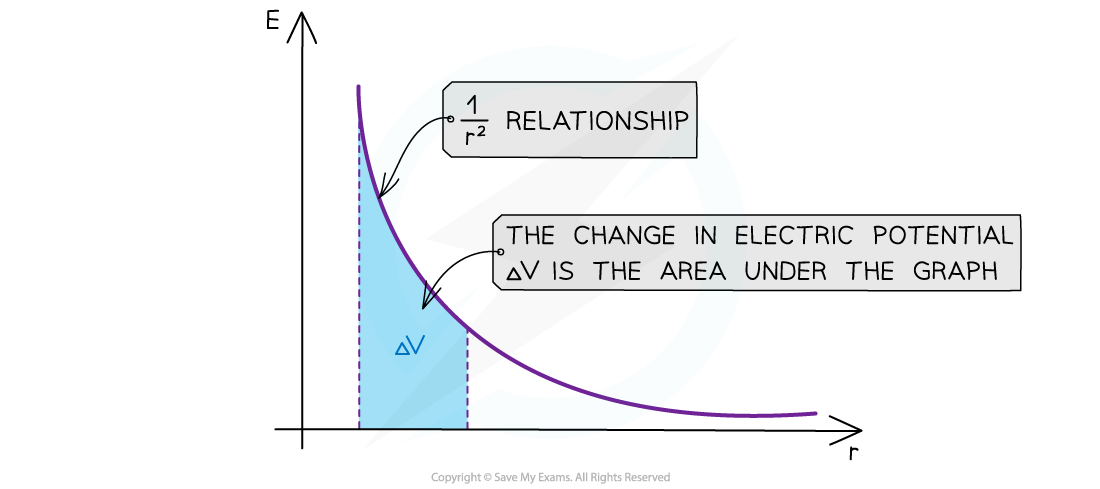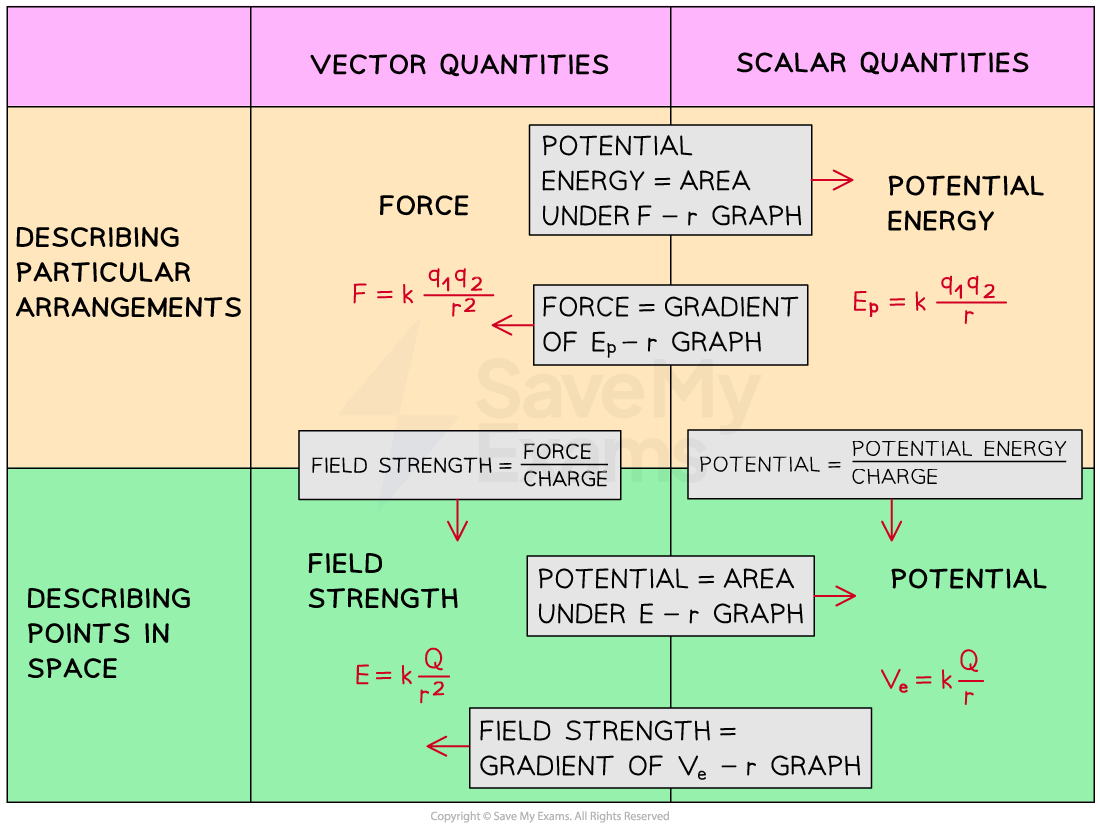Electric Potential Gradient (DP IB Physics) : Revision Note
Work Done on a Charge
When a charge moves through an electric field, work is done
The work done in moving a charge q is given by:
Where:
W = work done on or by the field (J)
q = magnitude of charge moving in the field (C)
ΔV = potential difference between two points (J C−1)
Electrical Potential Difference
Two points at different distances from a charge will have different electric potentials
This is because the electric potential increases with distance from a negative charge and decreases with distance from a positive charge
Therefore, there will be an electric potential difference between the two points equal to:
Where:
Vf = final electric potential (J C−1)
Vi = initial electric potential (J C−1)
The potential difference due to a point charge can be written:
Where
Q = magnitude of point charge producing the potential
k = Coulomb constant (N m2 C–2)
rf = final distance from charge Q (m)
ri = initial distance from charge Q (m)
Worked Example
A point charge of +7.0 nC is located 150 mm and 220 mm from points S and R respectively.

Calculate the work done when a +3.0 nC charge moves from R to S.
Answer:
Step 1: Write down the known quantities
Final distance from charge, rS = 150 mm = 0.15 m
Initial distance from charge, rR = 220 mm = 0.22 m
Magnitude of charge producing the potential, Q = +7.0 nC = +7.0 × 10−9 C
Magnitude of charge moving in the potential, q = +3.0 nC = +3.0 × 10−9 C
Coulomb constant, k = 8.99 × 109 N m2 C−2
Step 2: Calculate the electric potential difference between R and S
V
Step 3: Calculate the work done by the moving charge
J
Examiner Tips and Tricks
Remember that q in the work done equation is the charge that is being moved, whilst Q is the charge which is producing the potential.
Make sure not to get these two mixed up, as both could be given in the question (like the worked example) and you will be expected to choose the correct one.
Electric Potential Gradient
An electric field can be described in terms of the variation of electric potential at different points in the field
This is known as the potential gradient
The potential gradient of an electric field is defined as:
The rate of change of electric potential with respect to displacement in the direction of the field
A graph of potential V against distance r can be drawn for a positive or negative charge Q
This is a graphical representation of the equation:
The gradient of the V-r graph at any particular point is equal to the electric field strength E at that point
This can be written mathematically as:
Where:
E = electric field strength (V m−1)
ΔV = potential difference between two points (V)
Δr = displacement in the direction of the field (m)
The negative sign is included to indicate that the direction of the field strength E opposes the direction of increasing potential
Graph of electric potential against distance

The electric potential around a positive charge decreases with distance and increases with distance around a negative charge
The key features of this graph are:
All values of potential are negative for a negative charge
All values of potential are positive for a positive charge
As r increases, V against r follows a 1/r relation for a positive charge and a -1/r relation for a negative charge
The gradient of the graph at any particular point is equal to the field strength E at that point
The curve is shallower than the corresponding E-r graph
Determining potential from a field-distance graph
The potential difference due to a charge can also be determined from the area under a field-distance graph
A graph of field strength E against distance r can be drawn for a positive or negative charge Q
This is a graphical representation of the equation:
The area under the E-r graph between two points is equal to the potential difference ΔV between those points

The electric field strength E has a 1/r2 relationship
The key features of this graph are:
All values of field strength are negative for a negative charge
All values of field strength are positive for a positive charge
As r increases, E against r follows a 1/r2 relation (inverse square law)
The area under this graph is the change in electric potential ΔV
The curve is steeper than the corresponding V-r graph
Examiner Tips and Tricks
There are many equations and graphs to learn in this topic. A good way to revise these is to find a way of organising the knowledge in a way that resonates with you, here is an example of one possible way to do this:


You've read 0 of your 5 free revision notes this week
Sign up now. It’s free!
Did this page help you?
